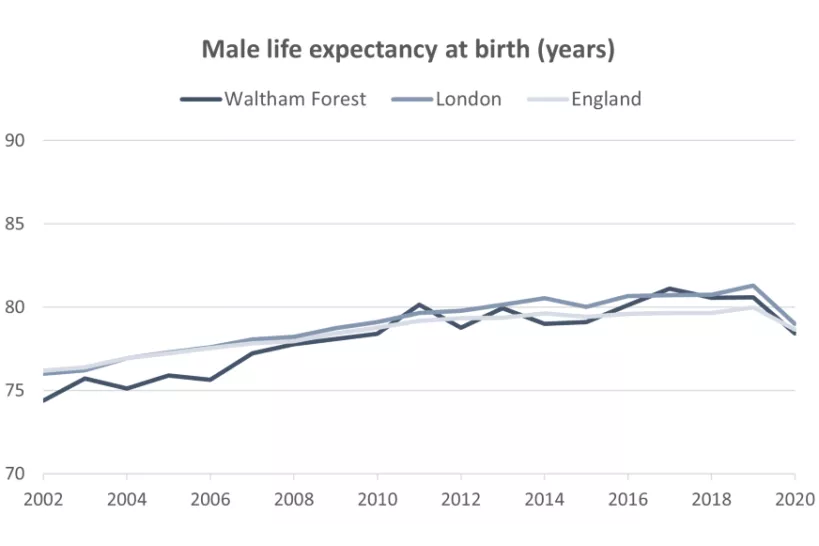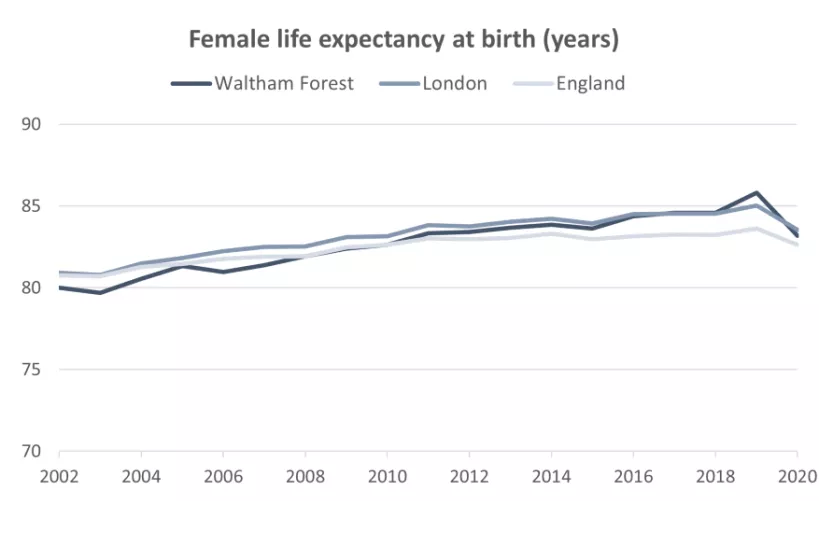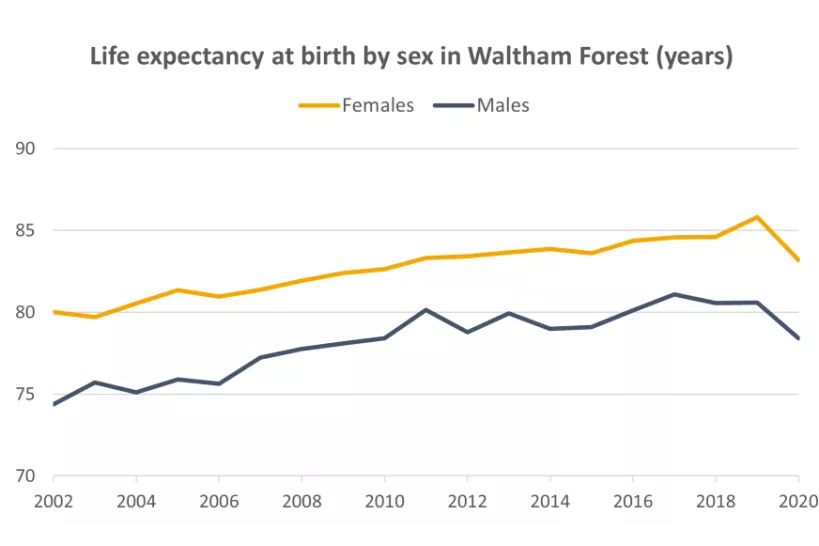Last updated: 7 June 2024
Next review: 7 December 2024
This content is part of the Waltham Forest JSNA. To see other JSNA content, visit the JSNA landing page
Life expectancy at birth is an important overall measure of the population’s health. It indicates the estimated length of life, or more specifically, the average number of years a new-born baby would expect to live if they experienced the age-specific mortality rates for that area and time period throughout their life.
During 2020, the COVID-19 pandemic caused both male and female life expectancy across England to fall to the lowest levels seen since 2011. The fall from 2019 was bigger for males (1.3 years) than females (0.9 years). COVID-19 was the main cause of death contributing to the reduction in life expectancy between 2019 and 2020 in London and across England [1].
Although life expectancy decreased across all English regions, London experienced the largest decline in the first year of the pandemic (2.3 years for males and 1.5 years for females). Within London, the least deprived areas saw the smallest decreases in life expectancy while the most deprived saw the largest decreases, widening the inequality in life expectancy to the highest levels recorded in any year in the last decade [2].
Across England and London, the male life expectancy fell more than female life expectancy in 2020, whereas in Waltham Forest, the female life expectancy declined more than the male life expectancy.
Male life expectancy at birth
In Waltham Forest, during 2020, the male life expectancy fell by 2.2 years compared to 2019 to the lowest level seen since 2011. The life expectancy for males in Waltham Forest as of 2020 (78.4 years) is below the London and England averages (79.0 and 78.7 years respectively).

Source: OHID Public Health Outcomes Framework. Data from ONS, single year trend calculated by OHID. Date accessed: 16 Feb 2023
Female life expectancy at birth
During 2020, the female life expectancy in Waltham Forest fell by 2.6 years compared to 2019 also to the lowest level seen since 2011. This is more than double the decline seen in female life expectancy across England (1.0 years) and higher than the overall decline in London (1.5 years).
The female life expectancy in Waltham Forest, which had increased faster than the London and England average in the past decade, remains slightly higher in 2020 (83.2 years) than the England average (82.6 years) and but fell below the London average (83.5 years).

Source: OHID Public Health Outcomes Framework. Data from ONS, single year trend calculated by OHID. Date accessed: 16 Feb 2023
Life expectancy at birth by sex Waltham Forest
The gap between female and male life expectancy in Waltham Forest (4.8 years) is slightly higher than the gap in London (4.6 years) and England as a whole (4.0 years). In Waltham Forest, the gap had narrowed to 3.5 year by 2017, but has widened again since then.

Source: OHID Public Health Outcomes Framework. Data from ONS, single year trend calculated by OHID. Date accessed: 16 Feb 2023
References:
[1] Office for Health Improvement and Disparities. COVID-19 Health Inequalities Monitoring for England (CHIME) tool. Date accessed: 13 Feb 2022.
[2] Office for Health Improvement and Disparities (2022). Health Profile for London 2021. Date accessed: 13 Feb 2022.